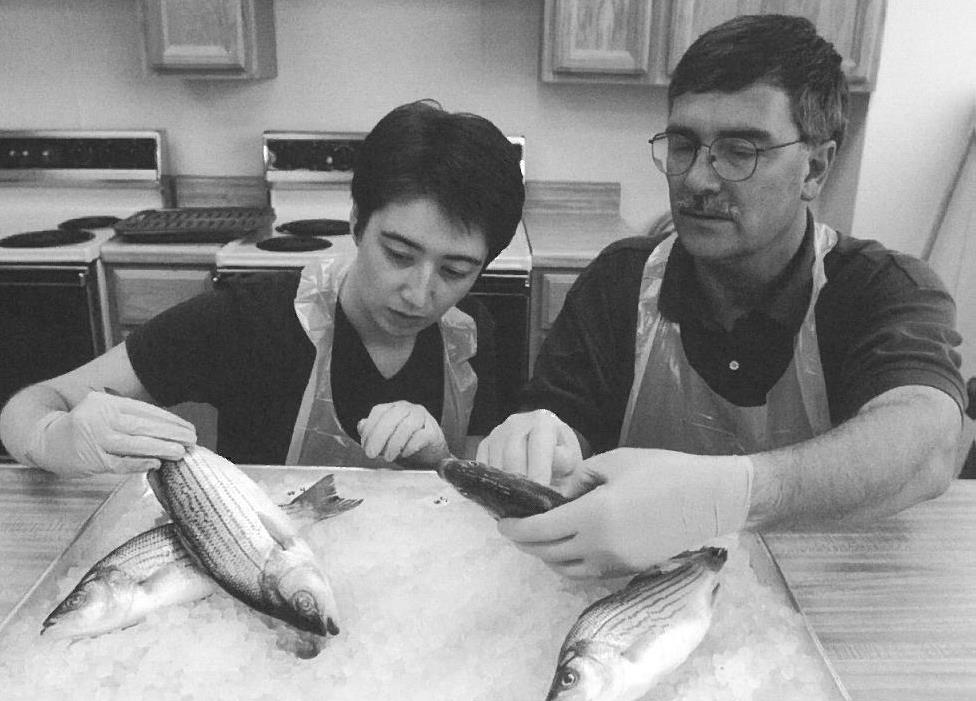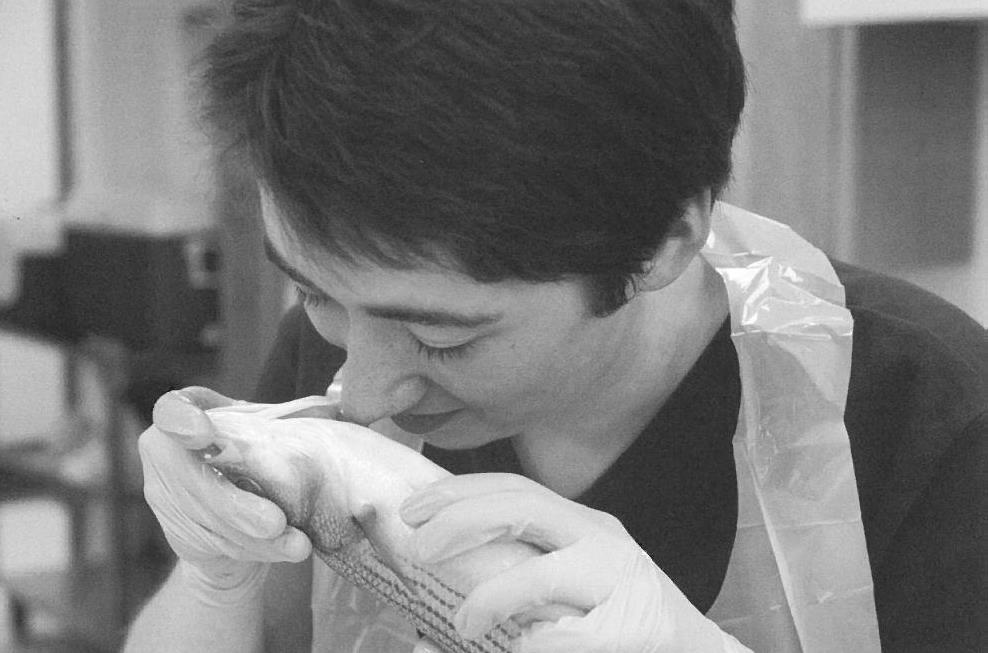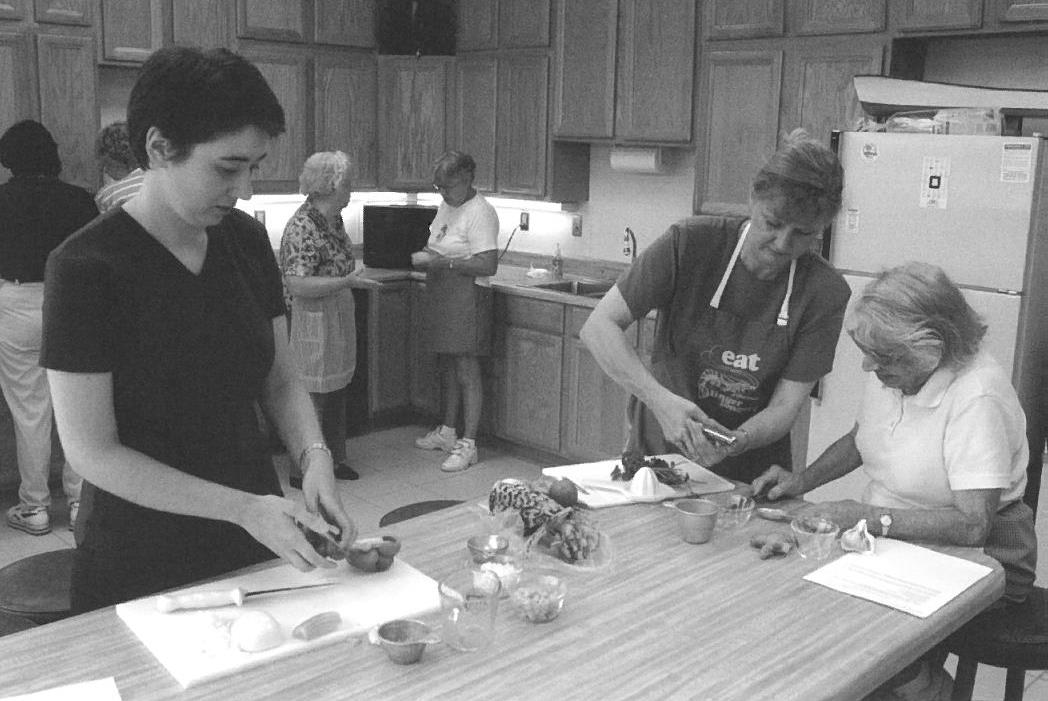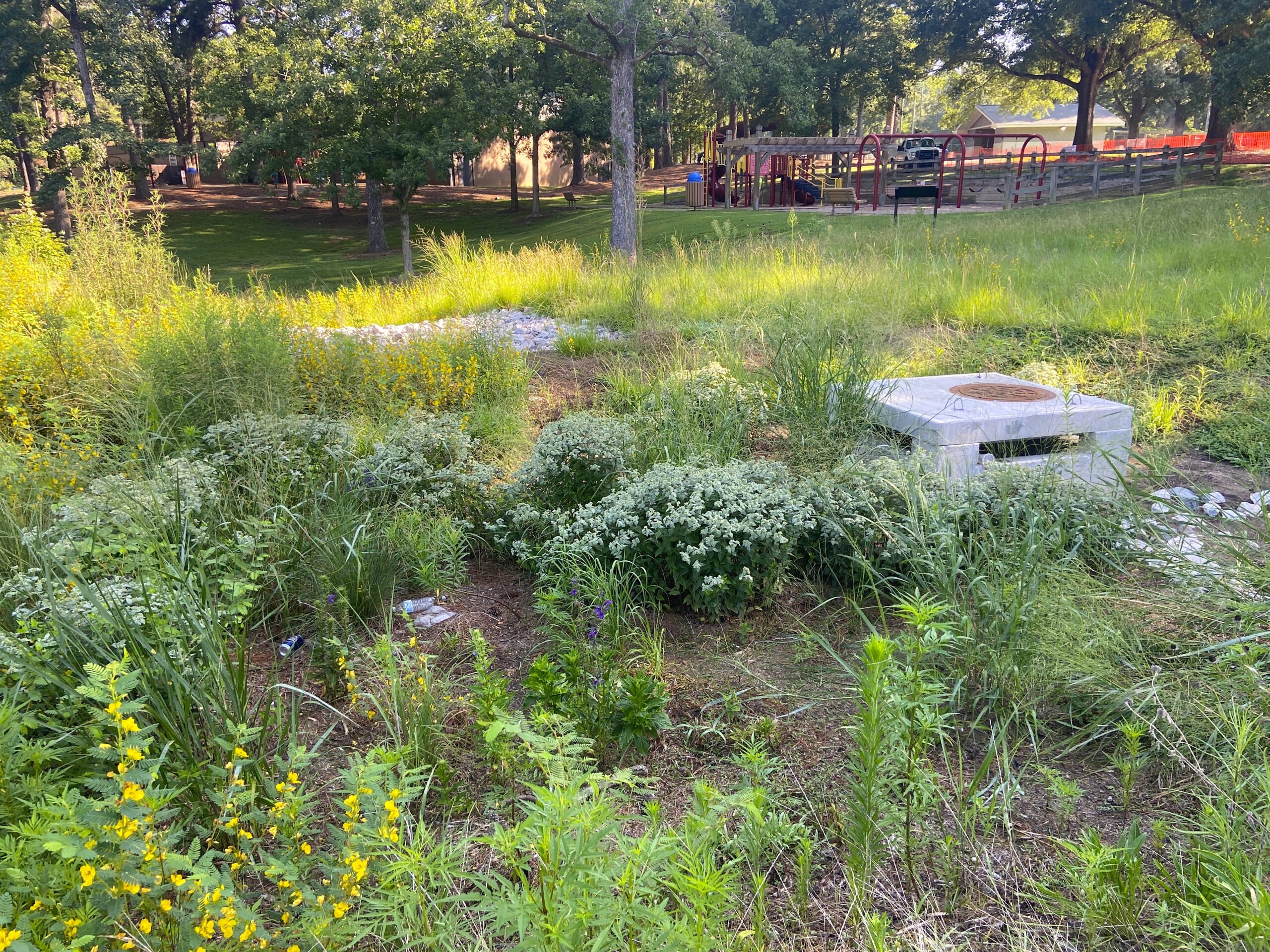Sea Science: Quality Key to International Seafood Standards

Seeing — and tasting — hybrid striped bass was a treat for Durita Nielsen, of the Danish Institute for Fisheries Research.
Until her visit to North Carolina, she had never worked with many of the species that make up our coastal aquaculture and marine fisheries industries. A native of the Faroe Islands, located northwest of Scotland and halfway between Iceland and Norway, she’s much more familiar with sealife in cooler waters of the northeast Atlantic.
But it was not her expertise in a specific species that brought Nielsen to the North Carolina State University Seafood Laboratory in Morehead City. Rather, her visit, sponsored by North Carolina Sea Grant, was designed to share overall European quality assessment methods.
“North Carolina has a long history of providing quality seafood. We want to make sure that our seafood industry will be able to sell the highest quality seafood anywhere in the world,” explains Ronald G. Hodson, North Carolina Sea Grant director.
Seafood safety — including intensive programs such as Hazard Analysis and Critical Control Points training — has been a focus of the U.S. seafood industry in recent years. But the industry also must match international standards for quality of fresh fish, adds David Green, seafood lab director.
Thus, Nielsen arrived in North Carolina to share the Quality Index Method, or QIM, a standard established by the QIM Eurofish Alliance in Denmark, the Netherlands and Iceland.
“The goal of this project is to improve overall acceptability of fish by ensuring the highest quality and best industry handling techniques,” says David Green, director of the seafood lab. “QIM provides the basis for developing national and international markets based on agreed-upon standards.”
Setting Quality Standards
QIM sets objective measurements of certain attributes or “sensory properties” for raw fish, Nielsen explains. QIM can be used to determine the shelf life — or more specifically the on-ice life — of fish used in processing or sold in markets.
“It is very easy to use in the industry,” she says, citing the protocols established for salmon, a major export for the Eurofish countries. “You don’t need to be a scientist.”

In fact, even the consumer can use the straightforward process. “Every household could learn to use this method,” Nielsen explains.
Standards are established for each species, with individual parameters offering scores ranging from zero to three. The lower the score, the higher the quality.
For salmon, a pearly skin color and shine would have a score of zero, while a yellowish color near the abdomen would rate a score of two. Similar evaluations are listed for the skin mucus and odor, as well as for various aspects of the eyes, gills and abdomen.
QIM inspectors evaluate a minimum of three fish from a larger group to provide an average score for the lot. That number is then compared against a calibration scale to determine the relative freshness and remaining storage days on ice.
In Europe, software allows inspectors to use hand-held computers to input the scores, then receive quick and reliable assessments. The software even includes photographs to guide the inspector in matching the fish at hand to the proper score.
So far, QIM outlines, known as schemes, are in place for 12 European species, including cod, haddock, sole, shrimp and pollock.
“The key benefit of QIM is that the method provides the user — producers, buyers, sellers and retailers — with a reliable and standardized freshness measure of a product,” Eurofish literature explains.
Initial N.C. Efforts
When Green learned of QIM at international meetings, he thought the process would complement an N.C. Fishery Resource Grant (FRG) project designed to improve handling of hybrid striped bass.
“This tool is exactly what we needed to help quantify the quality differences in the current FRG project with Pure Water Farms and Bioxy Inc. We believe the technique will be useful for the industry and for researchers,” Green says.
And once they become familiar with the QIM process, the seafood lab will work with the commercial fishing, seafood processing and aquaculture industries to develop similar evaluation tools for other North Carolina species.
The Danish experts suggested Nielsen as a visiting scholar for the project.
“During her one-month stay with us, we performed sensory evaluations on whole hybrid striped bass on ice,” Green explains.The fish were provided by Vanguard Fisheries and White Rock Fish Farm, both in Vanceboro, and Pure Water Farms in Creswell.
Researchers gathered a panel to evaluate hybrid striped bass during storage periods of 14 and 21 days. Those descriptions were the basis for the scheme or scorecard listing various aspects, such as eyes, skin and gills. The researchers even sampled two fillets for edibility and smell. Those scores were correlated with the remaining shelf life.
The preliminary scheme was then shared with HSB growers Ted Davis of White Rock Fish Farm and Steve Locke of Castle Hayne Fisheries, who suggested additional quality parameters.
“They were very pleased to see the results of Durita’s work and expressed an interest in pursuing the technique as a way to differentiate North Carolina-grown HSB from other suppliers,” Green says, adding that the project will be discussed with other N.C. fish farmers during an industry meeting.
Green and Nielsen will fine tune the HSB scheme, which they expect to present at the Trans-Atlantic Fisheries Technology Conference in Iceland next year. “This meeting will go a long way in educating other countries about North Carolina-grown hybrid striped bass and to demonstrate the industry’s interest in meeting quality standards on an international basis,” Green says.
International Experience
The project also fits objectives set by the seafood science “theme team” for the national Sea Grant network. Hodson and Jim Murray, former North Carolina Sea Grant extension director who now heads extension efforts of the National Sea Grant College Program, are co-chairs of the team.
“Our research project addresses the need to develop international research programs that share information for mutual benefit, rather than fueling competitive trade practices,” Green says.
Hodson agrees. “The development of quality assessment methods like QIM for the U.S. and North Carolina seafood industries also will ensure that our industries can meet the demands of seafood consumers anywhere in the world,” he says.

In many cases, foreign seafood producers have technological superiority, Murray adds. Thus, a theme team report recommends that Sea Grant assist the U.S. seafood industry by encouraging international exchanges and by promoting internationally acceptable systems to evaluate product quality and food safety.
“The bilateral exchange with Denmark is a good example of how Sea Grant can assist the industry to remain internationally competitive,” Murray says.
The project also provided a bridge between cultures on personal levels. It was Nielsen’s first visit to the United States — and the first opportunity for many North Carolinians to learn about the Faroe Islands and Denmark.
North Carolina’s summertime heat and humidity provided some challenges, but Nielsen found the community welcoming and the new seafood delicious.
While working at the seafood lab, Nielsen stayed with Janie Jones, director of the Carteret County Civic Center, and Charles Jones, regional director for the N.C. Division of Coastal Management.
In addition to her QIM work, she tested seafood recipes with retired Sea Grant seafood specialist Joyce Taylor and the Carteret County Nutrition Leaders, and worked with a local seafood processor to test recipes for value-added seafood. Nielsen also worked on the NC State main campus, learning new techniques for measuring texture in fish fillets with Sea Grant researcher Tyre Lanier and colleague Christopher Daubert.
Nielsen even had a visit to Core Banks and Cape Lookout arranged by Karen Amspacher, director of the Core Sound Waterfowl Museum. There, David Yoemans offered stories and songs describing colorful aspects of local history.
“I would love to come back,” Nielsen says with a smile.
For more information on the Quality Index Method, go online to www.qim-eurofish.com. For information on the Danish Institute for Fisheries Research, go to www.dfu.min.dk.
This article was published in the Autumn 2002 issue of Coastwatch.
For contact information and reprint requests, visit ncseagrant.ncsu.edu/coastwatch/contact/.


